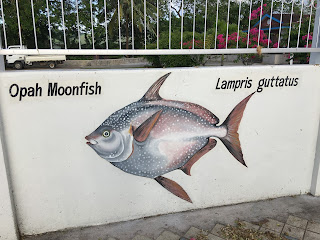We
returned to campus this Monday to learn that one of our colleagues in the
English Department had been involved in a car accident on Easter Sunday. Her
name was Amanda, and she was visiting her boyfriend in San Diego on the last
weekend of Spring Break. They had gone for a drive in one of the boyfriend’s classic
cars, a Porsche convertible from the 1950s. A driver who was apparently high on
marijuana—the police claimed that the bowl was still warm when they arrived on
the scene—crossed over the median and crashed into the car with Amanda and her
boyfriend. The details were pretty sketchy when we first learned of the accident.
We
got the news on Monday evening that the family was taking Amanda off life
support; the doctors had given them no hope that she would ever be able to
recover from the traumatic injuries that she had suffered in the crash. An
email went out with the details that were available, but most of us learned the
sad news by having friends call us before we learned it through email. We cried
a lot that night as we shared the news with others. Thankfully, I had my
boyfriend with me that day so that I didn’t have to drive home alone and could
periodically burst into tears.
The
next day, Tuesday, was one of the worst days I’ve ever experienced at work. I
hugged almost everyone I encountered, and we started to cry. Any mention of
Amanda’s name prompted tears. I tried to be strong—we all tried to be strong—but
the pain was too much to bear. Tears were appropriate. You can’t be strong when
you’re suffering.
Today
was not so very different. I cried fewer times, perhaps, but I spent longer
periods of time talking to my friends and colleagues. We needed to be in each
other’s company, to acknowledge our bonds and feelings for each other. People
would apologize for making someone cry, but honestly, just the mention of her
name or a reference to one of her many accomplishments or a question about what
would happen to her two young sons was all it took for me to burst into tears.
No one needed to apologize; nothing is wrong with feeling grief about the loss of
a beloved colleague.
People have posted lots of comments and pictures on Facebook about the impact that Amanda
had on their lives. I couldn’t articulate what I was feeling; I couldn’t even
respond to other people’s posts. No words seemed to convey the depth of sadness
I and the others were feeling. So, as I sometimes do, I turned to poetry. On
the Poetry Foundation’s webite, I located the poem “Præmaturi” by Margaret
Postgate Cole, which captures some of the emotions that I’ve been having since
we got the tragic news about Amanda.
When men are old, and their friends die,
They are not so sad,
Because their love is running slow,
And cannot spring from the wound with so
sharp a pain;
And they are happy with many memories,
And only a little while to be alone.
But we are young, and our friends are dead
Suddenly, and our quick love is torn in
two;
So our memories are only hopes that came
to nothing.
We are left alone like old men; we should
be dead
But there are years and years in which we
will still be young.
Amanda
was a talented poet, a gifted writer who had the ability to distill emotions in
beautifully expressive language. She was a great teacher, an inspiring educator
who was dearly loved by her students, students who learned from her so much
more than just how to be better writers; they learned that they had value. She
was a dear friend, someone who gave you her attention when she spoke to you and
who always made you feel like your conversations were special and memorable.
She was an amazing colleague, a respected and well-liked member of the
department, the division, the college, the community. She brought our creative
writing program back from the brink of extinction by founding a journal of the
arts that has been embraced by the community of writers and artists on and off
campus, by creating a series of readings on campus that bring many people out
every semester to share and hear the gift of writing, and by establishing a
true sense of camaraderie among students and faculty members over the joy of
creative writing.
Her
legacy will be long-lasting and significant. We will miss her.






























































